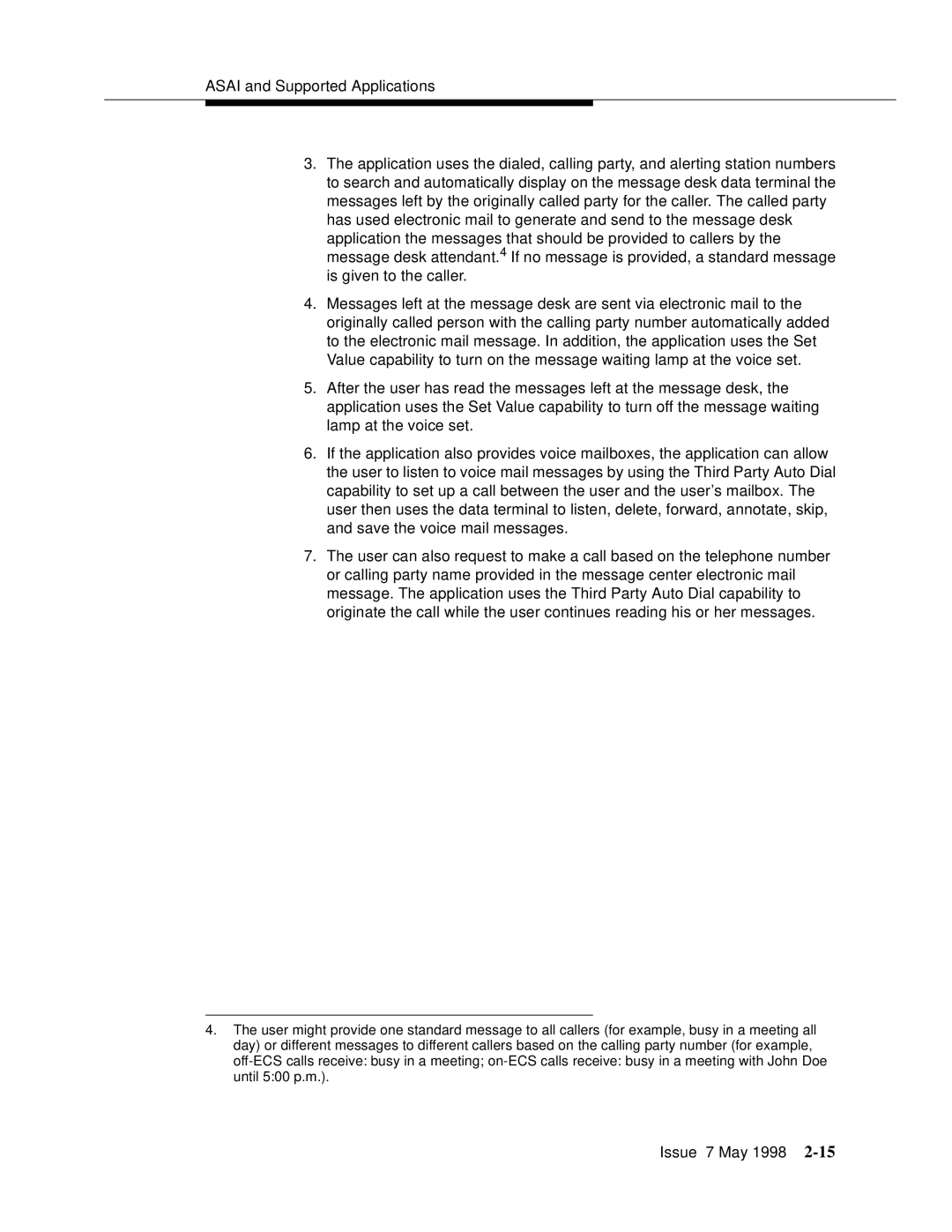
ASAI and Supported Applications
3.The application uses the dialed, calling party, and alerting station numbers to search and automatically display on the message desk data terminal the messages left by the originally called party for the caller. The called party has used electronic mail to generate and send to the message desk
application the messages that should be provided to callers by the message desk attendant.4 If no message is provided, a standard message is given to the caller.
4.Messages left at the message desk are sent via electronic mail to the originally called person with the calling party number automatically added to the electronic mail message. In addition, the application uses the Set Value capability to turn on the message waiting lamp at the voice set.
5.After the user has read the messages left at the message desk, the application uses the Set Value capability to turn off the message waiting lamp at the voice set.
6.If the application also provides voice mailboxes, the application can allow the user to listen to voice mail messages by using the Third Party Auto Dial capability to set up a call between the user and the user’s mailbox. The user then uses the data terminal to listen, delete, forward, annotate, skip, and save the voice mail messages.
7.The user can also request to make a call based on the telephone number or calling party name provided in the message center electronic mail message. The application uses the Third Party Auto Dial capability to originate the call while the user continues reading his or her messages.
4.The user might provide one standard message to all callers (for example, busy in a meeting all day) or different messages to different callers based on the calling party number (for example,
